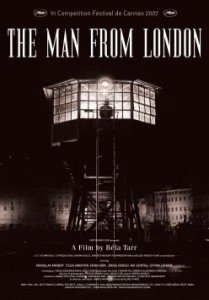
Despite recent successes for Hungarian indie film – the future looks uncertain – Andre Simonoveisz explores the reasons why:
Hungarian cinema has been arthouse-orientated since the mid-seventies when the reformist/revisionist Hungarian CP no longer believed that Hungarian fare could compete with Western productions. For directors like Miklos Jansco, Istvan Szabo, Martha Meszaros or Pal Sandor, who dominated the film scene until the fall of communism, this meant co-productions with Germany and France and many prizes at international festivals, whilst the home market was dominated by Hollywood.
 The next generation – Ildyko Enydi, Gabor Body and Bela Tarr went the same way: success in the West, but no competition for mainstream cinema in Hungary. But since the turn of the Millennium the money from co-productions has dried out largely due to the fact that Hungarian filmmakers, like many others from “liberated” countries, used their new freedom to create films they thought would appeal to wider Western audiences, only to find out that they could not compete with the majors.
The next generation – Ildyko Enydi, Gabor Body and Bela Tarr went the same way: success in the West, but no competition for mainstream cinema in Hungary. But since the turn of the Millennium the money from co-productions has dried out largely due to the fact that Hungarian filmmakers, like many others from “liberated” countries, used their new freedom to create films they thought would appeal to wider Western audiences, only to find out that they could not compete with the majors.
Another reason for this was that Western arthouse audiences had loved these filmmakers because they rebelled against the One-Party state. But after 1989, this reason for their support of East European cinema was not given any more and funding for home-made productions in all ex-communist states dried out. The exception was East Germany, were finance was provided generously by the German government.
Between 2009 and 2012, Hungarian film drifting in the doldrums as hardly any money was made available to the sector. The foundation of the new Hungarian National Film Fund in 2013 changed all this. Until the end of 2013, 27 films received production grants, 70 grants for script and project development. By the end of the year, 20 films had been completed, most of them Hungarian majority productions. The average Hungarian films had budgets of around 600 000 Euro (200m HUF). The biggest budget was given to Gyorgy Palfi for the upcoming production of TOLDI (1.6b HUF). Fourteen new films are expected to be finished by the close of 2014. TV co-productions have not picked up, since commercial channels prefer comedies, a genre rather neglected by the contemporary directors. Hungarian cinema has already lost one important director to Hollywood, Nimrod Antal, whose KONTROLL (2003) was one of the very few home grown successes in Hungarian cinemas – his recent output also includes blockbuster, PREDATORS (2011).
The new wave of films, like the ones shown in Karlovy Vary this July, bear witness to the fact that most of the current directors work very much within the traditional style of their predecessors. This goes particularly for Adam Csaszi, whose LAND OF STORMS flies very much in the face of the semi-fascist government of the day, repeating the experiences of subversive filmmakers in their fight against Stalinism. Konrad Mundruczo’s Un Certain Regard Winner (2014) WHITE GOD is another of this year’s success stories along with three films which were premiered in Karlovy Vary: Gabor Reisz’ FOR SOME INEXPLICABLE REASON and UTOELET (Afterlife), by Virag Zomboracz, show the conflict with the authoritarian father-generation, and Palfi’s FREEFALL, for which he won Best Director this year at Karlovy Vary, portrays the rather grim aspects of modern Budapest, when a woman jumps from the sixth floor to her death.
But the outlook is perhaps not as rosy as many believe: the trend of foreign dominance is difficult to stop- in 2013 over ten million people visited the cinema, but only five (from a total of 135) domestic films were screened. And their attraction remains very weak: OUR WOMEN by Peter Szajki garnered 30,000 admissions, the Berlin “Silver Bear” winner, JUST THE WIND, directed by Benedek Fliegauf, could not do any better. And Janos Szasz’ THE NOTEBOOK, a WWII drama, which won the “Crystal Globe” in Karlovy Vary (2013), did even worse. In Budapest alone, the art house scene has lost seven cinemas since 2009, with attendances steadily declining. AS